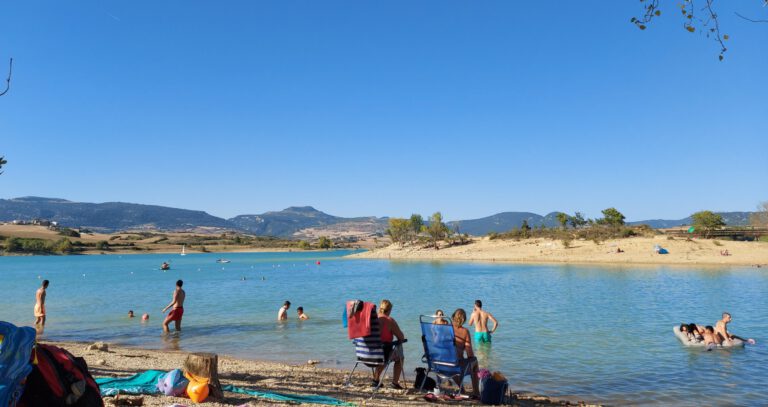TheFoz de Arbayún ("Arbayún Gorge") and the Foz de Lumbier ("Lumbier Gorge") are two spectacular gorges in eastern Navarre. The Foz de Arbayún is formed by the Salazar river, which rises in the village of Ochagavía. This gorge is 5.6 kilometres long and has a height of as much as 300 metres. The variety of nature provides a colour spectacle during autumn.
A few kilometers further on, the Salazar River joins the Irati River, forming the Foz de Lumbier. The Irati River originates in the Irati Forest, the second largest and best preserved beech and pine forest in Europe, after the Black Forest in Germany.

Both gorges have a rich fauna and flora. The Foz of Arbayún has the largest colony of griffon vultures in Spain, which can almost always be seen. In addition to the large number of griffon vultures, there are also badgers, wild boars, foxes, deer, martens and wild cats in the area.

Foz de Arbayun
The beauty of the Foz de Arbayún can be admired from various places. The most accessible location to view the greatness of this area is from the Iso lookout. This point is easily accessible by car as it is located along the road. The view from this lookout can be seen in the image above.
Another option is to view the Foz from the Bigüezal bridge. This option is especially recommended in summer, as it is possible to swim in the river. For the more adventurous types, there is also the option to jump into the water from the bridge, where the river is deep enough for a safe jump. Locals often enjoy a picnic on the riverbank and then go for a swim.
To get here, you first have to park at the village of Usún and then walk 1.6 kilometers to the bridge. In addition to swimming and relaxing, it is also possible to follow a hiking route. This one has a moderate level of difficulty and is not recommended for people with a fear of heights. At some points the path becomes narrower with a drop off at the side and you have to hold on to a steel rope. However, it is less challenging than it seems at first glance.
Foz de Lumbier
Although the Foz de Lumbier is less spectacular than the Foz de Arbayún, it is more popular. The reason for this is that Spain's first electric train ran along this route between 1911 and 1955. This trajectory connected Pamplona, the capital, with Sangüesa and was 58 km long. The development of new train routes led to the closure of this route, but the remains are still visible in the so-called Via Verde (“Green Way”).

The Foz de Lumbier can be reached from the parking lot 2 km from the village of Lumbier. Visitors must follow the Via Verde, an easy walk of about 1 hour. Along the route are the two tunnels through which the train used to pass.

At the end of the route are the remains of the Puente del Diablo (“Bridge of the Devil”). Built in the 16th century, it was destroyed by the French in 1812, during the War of Independence. This bridge owes its name to the legend in which the builder asked the devil for help to build it.








